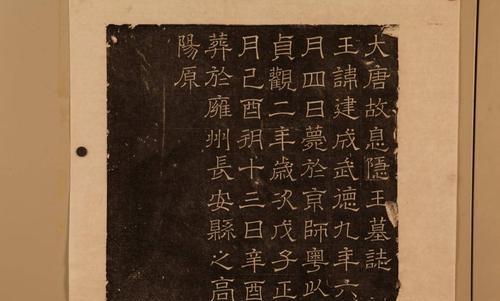Ancient China has a long history and a long history of culture, and in the long years, there have been many dynastic changes, and there have been countless changes in the emperor. Because in the period of feudal society, the emperor had supreme power and status, and could even control the life and death of others, so the competition for the throne became a major national event that many dynasties had to face, and there were many infighting, such as the "Change of Xuanwumen", which is a classic example.

The protagonists of the "Xuanwumen Change" are Li Jiancheng and Li Shimin, the former being Li Yuan's designated heir and the crown prince at that time, while the latter was the most powerful king at that time and had the support of a large number of outstanding people. Although to some extent, the ability of the crown prince was also enough to be competent for the position of emperor, but unfortunately, he met a capable and ambitious younger brother, and even Li Yuan could not control Li Shimin, and at the same time he was relatively soft-hearted and reluctant to attack Li Shimin, which doomed Li Jiancheng's failure. In this battle, Li Shimin personally shot his brother Li Jiancheng, and even his six children were spared.
After the Xuanwumen Rebellion, Li Shimin directly forced Li Yuan to abdicate, completely controlled the power of the government, and led the country on the road to prosperity. Obviously, Li Shimin's merits are undeniable, but his way of ascending to the throne is shameful, and this is an important reason why he is controversial in the world.
It is very interesting that in the second year of Zhenguan (628 AD), Li Shimin posthumously named Li Jiancheng as the King of Xie, posthumously called "Hidden", and reburied the imperial tomb. Fourteen years later, Li Shimin posthumously awarded Li Jiancheng the title of crown prince. In 2005, Li Jiancheng's epitaph was discovered in Xi'an, but at that time, the workers thought that they had dug up the treasure, so they contacted the cultural relics dealers and sold the two stone tablets. It was not until 2012 that the epitaph was recovered and placed in the Xi'an Museum.
Li Jiancheng's epitaph cover is in the shape of a dome, and the Yang wen seal book "Inscription of the Epitaph of the Late King of the Tang Dynasty" has a side length of 52 cm and a height of 11 cm. Although Li Jiancheng was once the crown prince, his epitaph was very cold, with only 55 words: "Tomb of the Late Hidden King of the Tang Dynasty Wang Zhencheng Wude 9 June 4 Xue yu Jing Guan Zhen Yu Zhen Jian That is to say, only Li Jiancheng's name, nickname, time of death, burial time and place are recorded above, but there is no mention of his life and deeds.
After studying the epitaph, experts found that what was different in the entire epitaph was the word "hidden", which may reflect Li Shimin's thoughts. Perhaps this was revised after the epitaph had been made, and the previous nickname was "Spirit". Obviously, a "hidden" character shows Tang Taizong's attitude towards Li Jiancheng, reflecting his hidden thoughts about the change of Xuanwumen, and he is still afraid of the way he will obtain the throne, so he does not want the ministers and the people to talk about this matter, but also hopes that this matter can be completely eliminated from people's impressions. And Li Jiancheng's epitaph does not record his life, which is probably also li Shimin's meaning.
References: New Book of Tang, Old Book of Tang